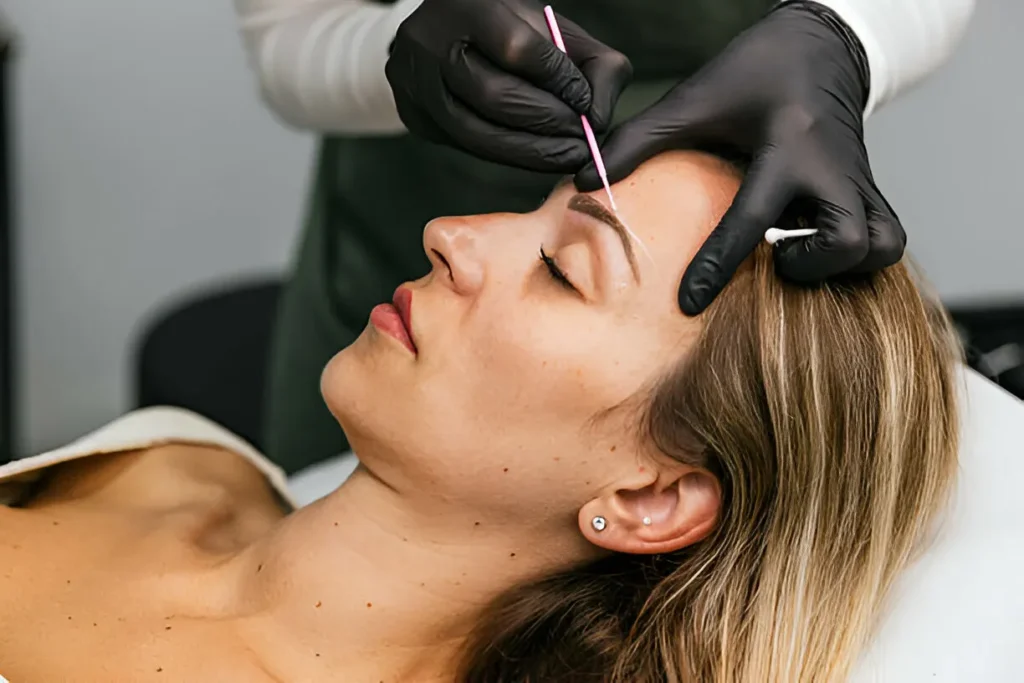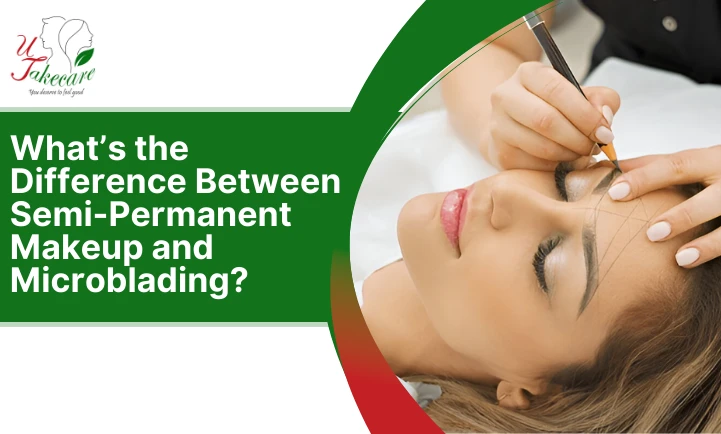If you’ve been thinking about getting your eyebrows done, you’ve probably heard the terms microblading and semi-permanent makeup. They are often used to mean the same thing, and in many ways, they are very similar. But there are also some important differences between the two.
This guide will focus on the distinction between semi-permanent makeup and microblading to help you know what each is and to select which option is right as per your requirements.
What Is Semi-Permanent Makeup?
Semi-permanent Makeup which is commonly referred to as Cosmetic tattooing is a procedure whereby a pigment (colour) is deposited into the skin through the use of a digital machine. The needle of the machine is small and moves very fast depositing pigment.
Semi-permanent because it is not permanent like a regular tattoo and you can come in for a touch up at any time the colour gradually fades away over time rather than lasting forever!
What Is Microblading?
Microblading is similar to semi-permanent makeup, but it is performed differently. Rather than machine-based, microblading is performed with a manual instrument consisting of tiny blades. These blades cut very fine marks in the skin and the pigment is introduced into these fine cuts.
The goal is to create super realistic, hair-like strokes that look just like real eyebrow hairs.
What’s the Main Difference?
The main difference between microblading and semi-permanent makeup? It’s the tool that’s used:
Microblading = tiny handheld blade (used to draw super fine, hair-like strokes)
Semi-permanent makeup = machine tool (gently tattoos pigment into the skin)
Both fall under the umbrella of cosmetic tattooing / both are semi-permanent – meaning the results fade over time (not forever, but not just a few days either).
Do They Look Different?

Both methods can give you beautiful eyebrows, but the outcome may look a bit different based on the method and your skin type. Microblading is best known for creating a very natural, hair-stroke look. It works best for normal to dry skin types.
Machine methods (semi-permanent makeup), can also create soft shading, ombré effects, or even natural strokes. These methods work better for oily skin because they are more gentle. They also last longer for oily and sensitive skin types.
With each you can have plenty of other looks, such as:
- Ombre-Brows (lighter in the front, darker in the tail).
- Powder brows (filled-in soft look)
- Combination brows (hair-strokes and shading combination)
The final result really depends on your preferences and your natural brow shape.
Which One Should I Choose?
Choosing between microblading and semi-permanent makeup depends on a few things:
- Your skin type
- Microblading might be effective in case you have dry to normal skin.
- Machine technique may be more suitable in case you have oil/mature skin.
- The look you want
- Want a natural hair-stroke look? Microblading might be the way to go.
- Prefer a soft, shaded look or ombre effect? The machine method is ideal.
- Your lifestyle
- In case you sweat a lot or stay out in the sun a lot, the machine technique can show better results.
Do Both Methods Last the Same Amount of Time?
Both microblading and semi-permanent makeup are not permanent, which means they will fade over time.
- Microblading usually lasts around 12-18 months, depending on your skin type and lifestyle.
- Semi-permanent makeup can last 2 years or more when it is well taken care of.
You may have to come in once after your initial appointment to fix the shape and colour as well. You can always get touch-ups when they are required to maintain fresh looking brows.
Is There a Difference in Healing Time?
Both methods require some healing, but most people find that the healing process is similar.
- When the process is done, your brows can appear a little dark initially.
- In another week or two the colour will lighten as the skin heals.
- Follow-up care should be taken seriously to obtain good results.
How Much Does It Cost?
Price may differ with the choice of method, and experience of the technician among other factors. To get the most precise and current details, we advise you to contact us directly.
Contact us to find out more and get all your questions answered.
Not Sure Which One Is Right for You?
That’s what we’re here for! Whether you’re leaning toward microblading or semi-permanent makeup with the machine method, our friendly and professional team is happy to help.
Book a consultation with one of our experienced technicians, and we’ll:
- Check your skin type
- Talk about your goals
- Show you examples of both techniques
- Help you choose the right method for your dream brows
Final Thoughts
Microblading and semi-permanent makeup can both give you stunning, natural looking brows that will save you time every day. The primary difference is the method used – one by a manual tool and the other by machine – each will provide you with long lasting, beautiful results.
The best way to discover what is right for you is to set up a consultation. Contact us now to start your brow journey; we can’t wait to help you!
FAQs
1. What is the primary distinction between microblading and semi-permanent makeup?
Microblading is done with a handheld tool to create hair-like strokes, while semi-permanent makeup is done with machine for softer shading or defined brows.
2. Which technique lasts longer, microblading, or semi-permanent makeup?
Both are semi-permanent, but machine techniques do tend to last slightly longer especially on oily skin.
3. Is microblading or semi-permanent makeup better for oily skin?
Semi-permanent makeup with a machine is generally better for oily or sensitive skin as the pigment holds longer and heals more evenly.
4. Can I wear makeup after getting microblading or semi-permanent makeup?
Avoid wearing any makeup on or near the brow area for at least 7-10 days after the procedure. This helps prevent infections and ensures optimal healing. Once fully healed, you can return to your regular makeup routine.
5. Is semi-permanent makeup safe?
Yes, semi-permanent makeup is safe when performed by a trained and certified professional using sterile equipment and high-quality pigments. Always ensure your technician follows strict hygiene standards.


